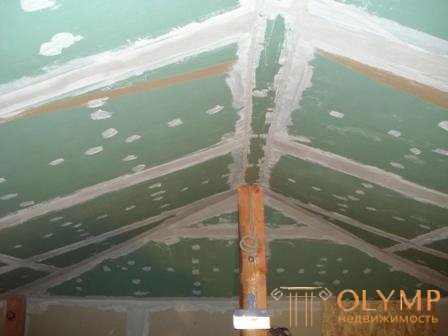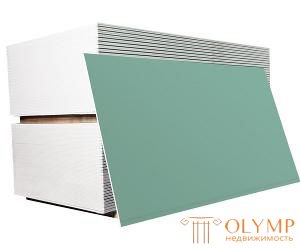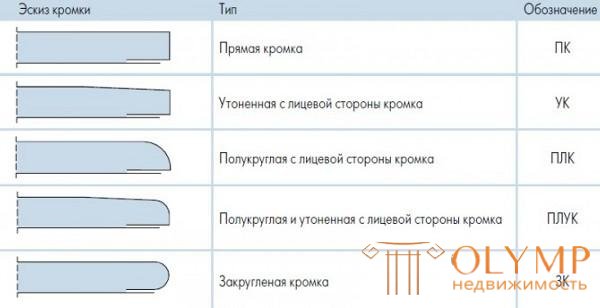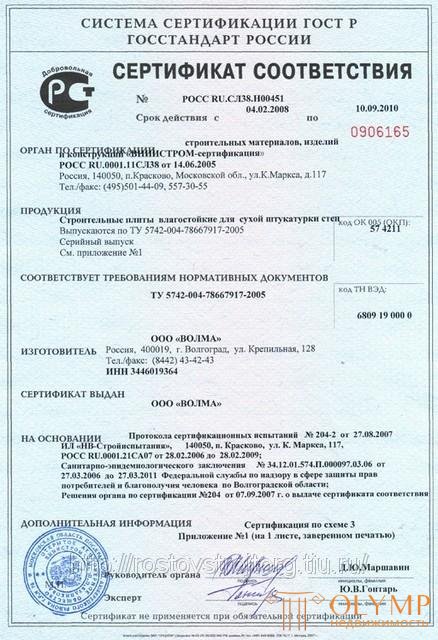
Drywall has long been a classic in the issue of repair. Relatively inexpensive material is sufficiently versatile to apply it in various situations. Yes, and ease of handling it plays an important role. A bad reaction of gypsum to a moist environment led to the creation of a GKLV, which stands for a moisture resistant plasterboard.
New material began to be used in rooms where humidity could reach 85%. First of all it is about baths, showers and toilets. However, over time, water-resistant drywall began to be used wherever possible. Sometimes it makes sense to use moisture resistant drywall in an unheated room where there is a lot of moisture.
Content: [hide]
As already mentioned above, moisture resistant drywall is ideal for use in bathrooms, where it is most often used. Normal drywall for these purposes is not suitable. Often in the shower stalls also used GKLV, but it must be overlaid with tiles.
 Balconies and loggias, regardless of whether they are heated or not, can be repaired using waterproof plasterboard. Also, this material is in demand when working with areas near the pool. It is suitable for finishing the garage.
Balconies and loggias, regardless of whether they are heated or not, can be repaired using waterproof plasterboard. Also, this material is in demand when working with areas near the pool. It is suitable for finishing the garage.
GKLV is often used in the kitchen, although in many situations it is not so necessary. But to use it for door and window slopes is necessary, because in these places the humidity is higher than in other parts of the room . To understand how and where to apply moisture-resistant drywall, you need to pay attention to its advantages:
First you need to understand how to find the material of interest and distinguish it from others. The simplest thing to do is to pay attention to the moisture-resistant drywall. It should be green or light green, while ordinary drywall is framed in gray. If this is not enough, then the marking of moisture-resistant drywall will help dispel all doubts. ГКЛ is written on ordinary sheets, and ГКЛВ on waterproof sheets.
However, not only visual differences are important, which will help to find the right material in the hardware store. When you know how to distinguish moisture-resistant drywall from normal, you should pay attention to other important factors.
The dimensions and characteristics of moisture resistant plasterboard will help to understand where and how it is best used.
Waterproof plasterboard is available in several possible sizes at once:

Possible sheet options
In addition to the width and length, we are also interested in the thickness:
Due to the use of standard sizes in the production of gypsum sheets, they can be combined in work, regardless of whether they are ordinary or moisture resistant.
The thickness of moisture resistant drywall is only important if it will be used for the ceiling. It is difficult to lift massive sheets above your head, and the attachment is required the more, the heavier the GKLV. Moreover, these sheets do not save from flooding neighbors, so that for the ceiling, the smaller the thickness, the better.
In addition to size and water repellents, you can pay attention to the technical parameters of the material and the type of edge. Usually nobody looks at the edge, although this is a very important point. It is often cut, and then putty, but it violates the integrity of the cardboard shell. Therefore, it makes sense to think about choosing a sheet with an edge that will not need to be cut. There are 5 types of edges.

It may look like the edge GKLV
Each GKLV has a certificate of conformity. This certificate indicates the main characteristics of the material, which is worth paying attention to. If you buy a drywall brand known, then the certificates are always all right. However, if you take cheaper products, then you need to make sure that moisture-resistant drywall meets all state standards. You need to check the material for the following matches:
The certificate of conformity says that the material is safe for human health and not dangerous during operation.

Sample Certificate of Compliance
It is believed that the GKLV serves approximately 10-15 years. And it's not so much that the material wears out, but that it is easy to damage. One punch and he will fall into disrepair. Therefore, the service life of moisture-resistant drywall for outdoor work is even less. The environment is more aggressive, not only because of the weather, but also because of the possibility of unwanted mechanical stress.
When working with moisture-resistant drywall does not arise special difficulties, but there are some small nuances. For example, the weight of the sheet is more than usual, which means that you may need help, because even if you cut it, it will be heavy.
It is recommended to use GKLV only in those rooms where there is a ventilation system so that condensate does not accumulate.

Moisture resistant drywall suitable for walls and ceilings
Often the question arises, which side to fix moisture resistant drywall. Wall and ceiling plasterboard mounted on the same principle, the convex side out, just like regular gypsum plasterboards. The waterproof sheet does not have any special side that better protects against moisture. Although some masters prefer to additionally treat sheets with anti-fungal and hydrophobic materials on both sides for greater reliability.
Some even think about how to make drywall moisture-proof with their own hands. They self-soak the usual sheets of drywall, but in fact it is a waste of energy, and the benefits of such work is very doubtful.
In all other questions of installation between the GKLV and GKLV there is no difference.
Что бы оставить комментарий войдите
Комментарии (0)